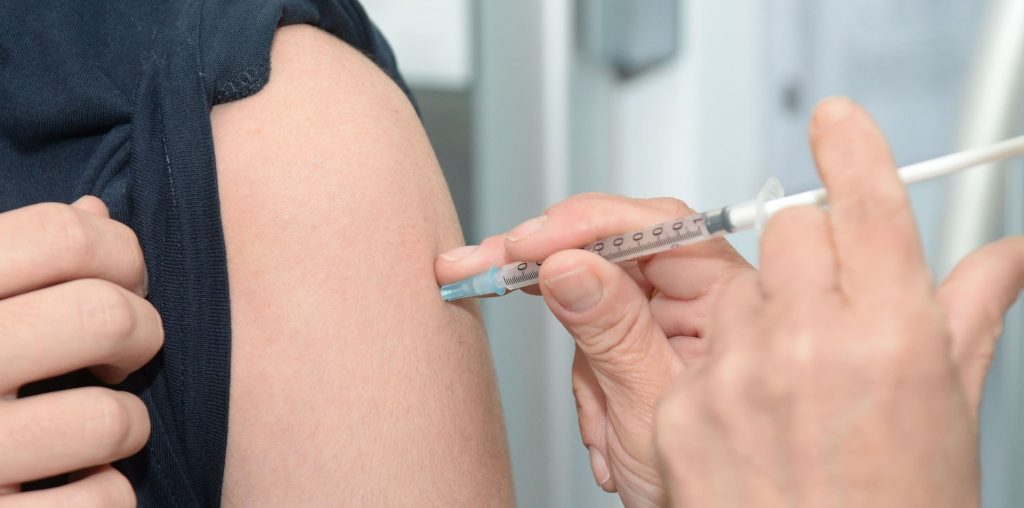Looking beyond the horizon for new vaccine strategies against HIV-1 infection
27 August 2019
James Wheeldon, School of Medicine
HIV/AIDS remains a global threat affecting 37.9 million
In the developed world, HIV/AIDS is now effectively managed, to the point where patients who adhere to highly-active combined anti-retroviral therapy can live near-normal life expectancies. Nevertheless, Human Immunodeficiency Virus 1 (HIV-1) still remains a significant threat to life in many parts of the world. Since 2016, HIV/AIDS has remained the fourth leading cause of death among developing countries and last year alone saw 1.7 million new cases of HIV-1 infection, prompting discussion for new transmission-preventative strategies.
To date, four HIV-1 vaccine therapies have been trialled with only one showing modest protection against acquisition, which unfortunately fell short of the efficacy standards required. So, what is going wrong? And why is it that, despite nearly 40 years of HIV-1 research, we still lack an effective vaccine?
August is National Immunisation Awareness Month, so it felt fitting to highlight the unmet clinical need for effective HIV-1 vaccines and the barriers to development that many researchers are currently facing.
Shortcomings of HIV-1 vaccinology
Conventional vaccines work by delivering a preparation of inactivated disease-causing agent (bacteria, virus), to prime the immune system so it can recognise and respond to specific microbes. After priming, the body’s immune cells work together to provide a robust response against the invading pathogen, either directly killing infected cells (T-cells/NK cells) or producing antibodies (B-cells) to neutralise virus before an acute infection can become established. Without a vaccine, the time taken to raise an immune response against the infection is delayed, allowing a window of opportunity for the virus to spread and in the case of HIV-1, these responses are often described as “too late and too little”.
But like many viruses, HIV-1 evolves rapidly through mutations in its genetic code, leading to the generation of a diverse range of HIV-1 variants. While most mutations are made in error, some may be beneficial to the virus, inadvertently helping it escape the pressures of host immunity. An effective vaccine must therefore induce broad neutralising capabilities in order to target HIV-1 diversity, but creating one that achieves this has presented a critical challenge for researchers.
Since viruses can only replicate within the host cell, they naturally evade exposure to anti-HIV-1 antibodies present in circulation. Therefore, internalised viruses may remain hidden or dormant in infected cells to create a ‘viral reservoir’, a physiological compartment of undetectable HIV-1. In addition, cell-associated HIV-1 can be transmitted through a highly efficient cell-to-cell mechanism, estimated to be up to 18,000 times more effective than infection by cell-free virus.
Dendritic cells: a novel strategy against transmission
The dendritic cell – an immune cell residing in the upper layers of the skin and mucous membranes – is a crucial mediator of long-lasting immune protection, responsible for priming cell-based and antibody-mediated immunity against infectious agents. Dendritic cells function by engulfing invasive microorganisms, degrading them and presenting their proteins to effector immune cells. Thus, exploiting this process is an attractive option for therapeutic intervention and, due to their anatomical distribution, they are an ideal target for minimally invasive vaccine delivery.
New research from our group aims to use the dendritic cell as a novel platform for HIV-1 vaccine delivery. We found that by coupling HIV-derived proteins to nanoparticles and directly delivering it to dendritic cells using intradermal microneedles, vaccinated dendritic cells were significantly more effective at priming both T-cell and B-cell immune responses against HIV-1. This approach could be valuable in shaping the early immunological events which determine the outcome of infection.
Our group continues to investigate the role of dendritic cells as a gatekeeper of immunity and new ways in which they can be used to prevent the acquisition and transmission of HIV-1 at the earliest stages of infection. More recently, our research focus has turned toward therapeutic disruption of cell-to-cell transmission, specifically using RNA interference screening to identify new genes involved in dendritic cell-mediated transfer of HIV-1. By characterising the molecular mechanisms regulating cell-to-cell transmission, our research can help develop more accessible therapies to close the gap in health inequality among some of the most deprived societies.

Get in touch with James @jgwheeldon
- February 2025
- September 2024
- June 2024
- March 2024
- February 2024
- November 2023
- September 2023
- June 2023
- May 2023
- January 2023
- December 2022
- November 2022
- October 2022
- September 2022
- July 2022
- May 2022
- April 2022
- January 2022
- December 2021
- November 2021
- August 2021
- July 2021
- June 2021
- February 2021
- January 2021
- November 2020
- October 2020
- September 2020
- August 2020
- July 2020
- June 2020
- April 2020
- March 2020
- February 2020
- January 2020
- December 2019
- November 2019
- October 2019
- September 2019
- August 2019
- July 2019
- June 2019
- May 2019
- April 2019
- March 2019
- February 2019
- January 2019
- December 2018
- November 2018
- October 2018
- September 2018
- August 2018
- July 2018
- June 2018
- May 2018
- April 2018
- March 2018
- February 2018
- Biosciences
- Careers
- Conferences
- Development
- Doctoral Academy Champions
- Doctoral Academy team
- Events
- Facilities
- Funding
- Humanities
- Internships
- Introduction
- Mental Health
- PGR Journeys
- Politics
- Public Engagement
- Research
- Sciences
- Social Sciences
- Staff
- STEM
- Success Stories
- Top tips
- Training
- Uncategorized
- Wellbeing
- Working from home